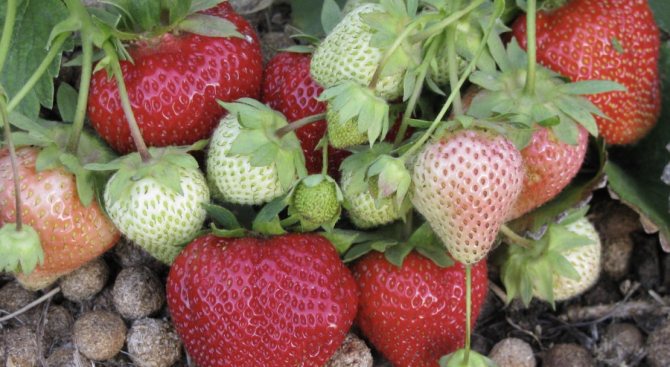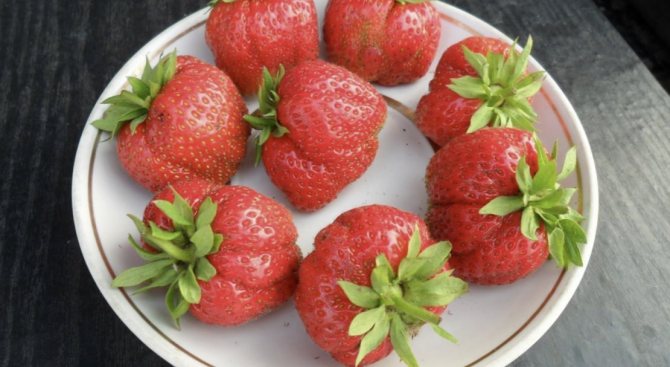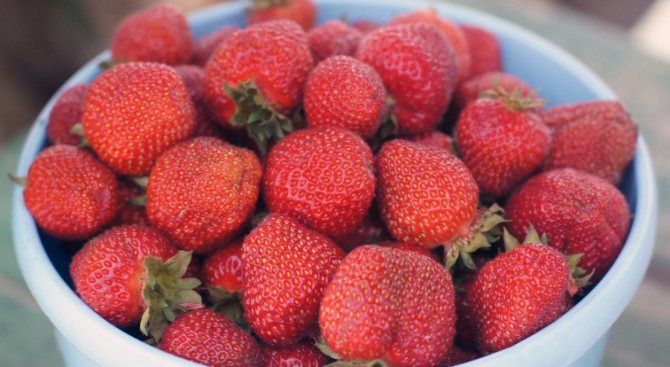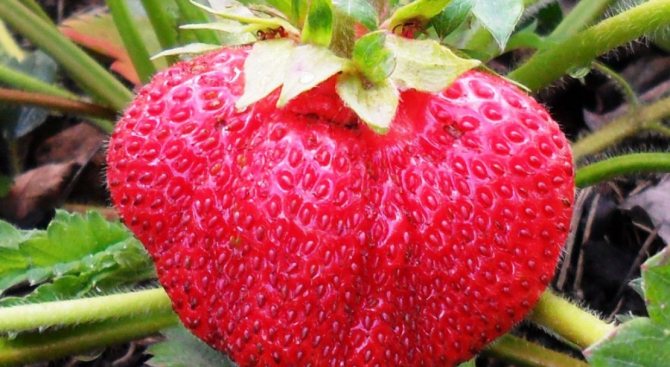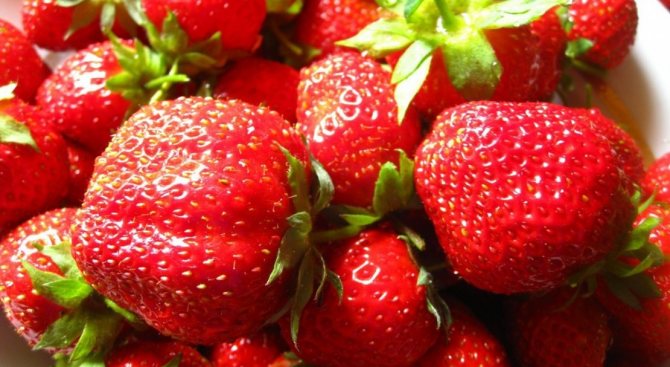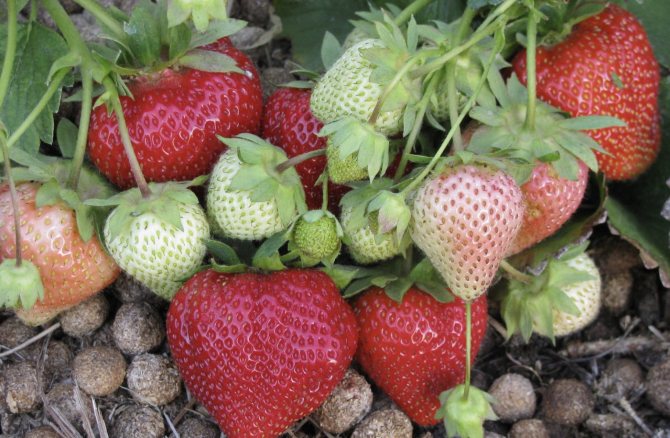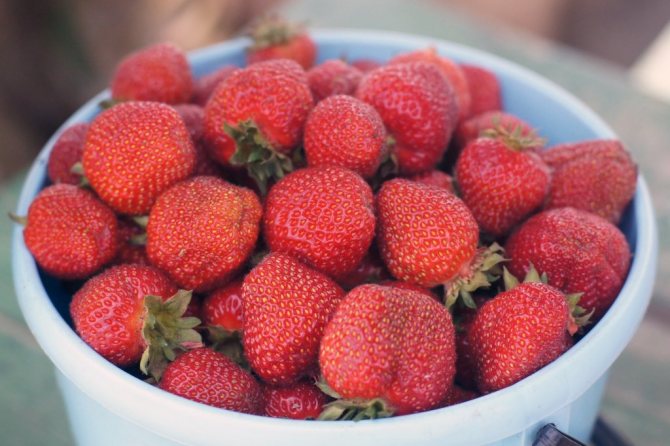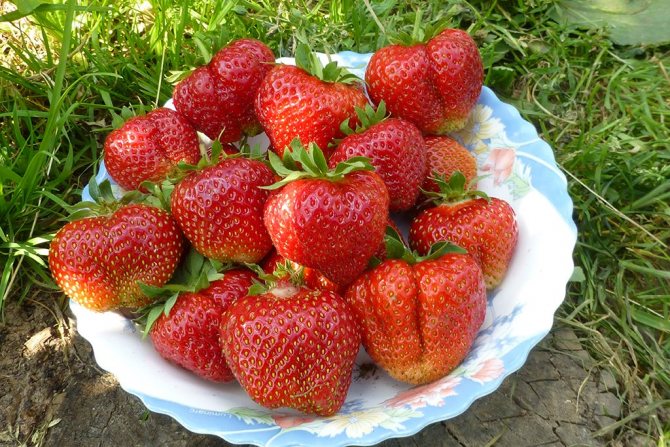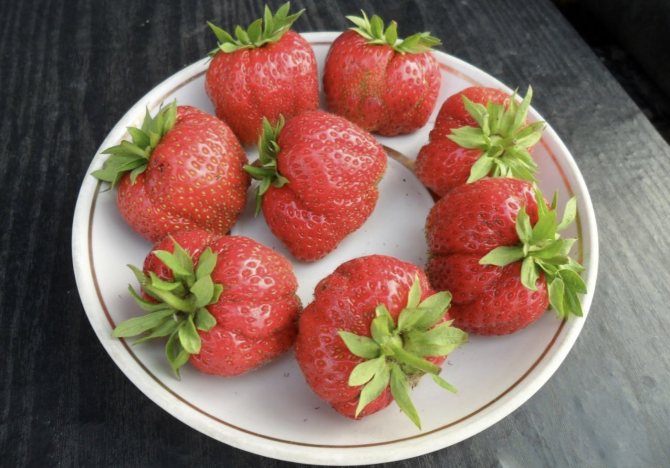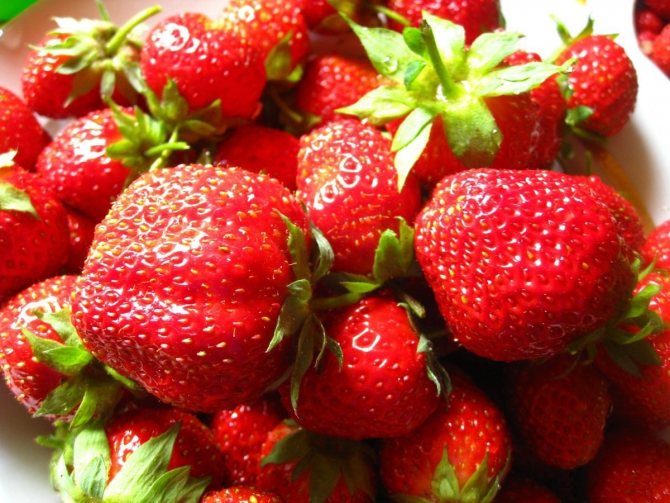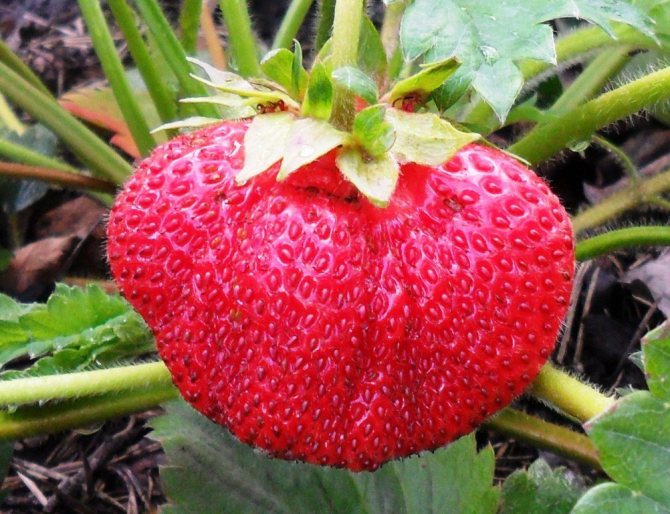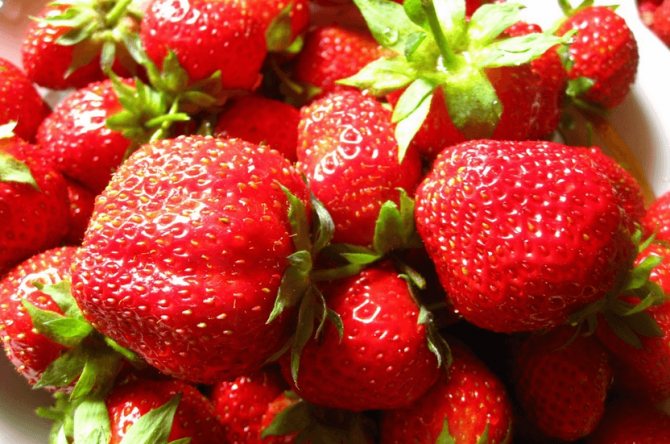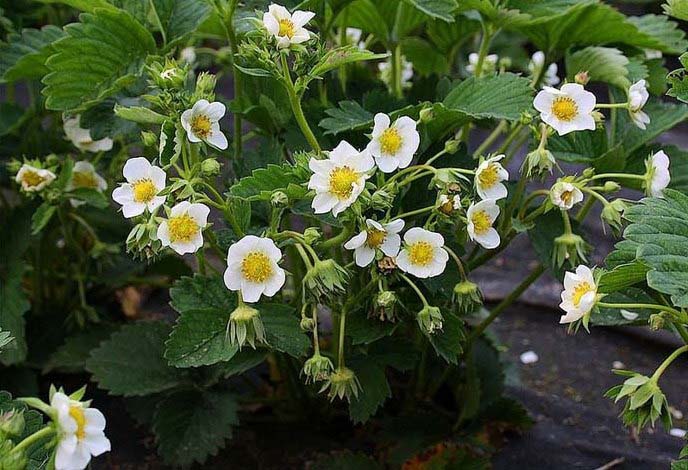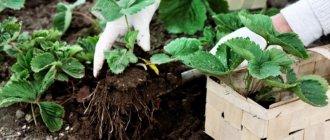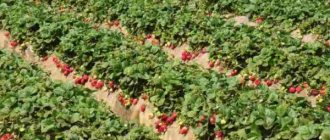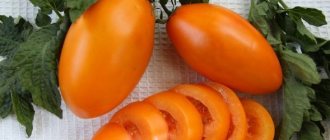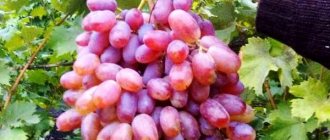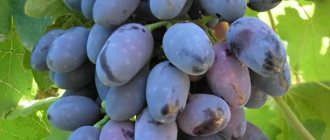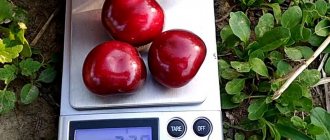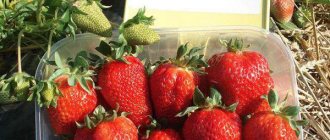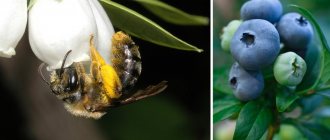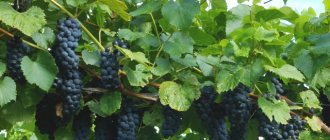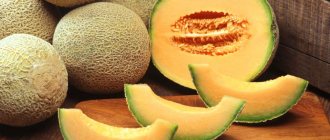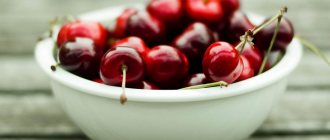What is the difference between domestic farmers and those living in the far abroad? First of all, the fact that the agrarians of Western Europe and America are constantly introducing new varieties and quickly forgetting the old ones. Our gardeners first check new products for a long time, and then grow them for years, although this is not always justified. Judging by the gardeners' reviews, description and photo, Lord strawberry is a variety, although relatively old, but it is the one that you should not rush to part with.
Bred in the 80s of the last century by British breeders, the variety quickly gained popularity, and now it is practically forgotten in Western countries. Our strawberry variety Lord remains one of the best for growing in temperate and cool climates. Moreover, his reputation is good and well deserved.
Where is the best place to grow Lord strawberries?
Strawberries are optimally suited to the conditions of the south and middle lane.
In the northern regions, it can only be grown in greenhouse conditions. Moreover, in the summertime it can be opened for maximum access to the sun's rays. The best solution for the northern regions would be a greenhouse with constant heating, drip irrigation and with the right lighting.

In areas with a cold climate, the berries are recommended to be grown in a greenhouse.
How to care
Mulching and fertilizing
Strawberry Lord responds positively to organic feeding. For this, humus, chicken droppings can be used. When they are introduced, the yield of the variety increases many times. To reduce the time spent on caring for a berry crop, but if you do not want to use a film, then you need to lay a layer of mulch immediately after planting.
You can use sawdust or pine needles. Due to the mulch layer, moisture will be retained in the soil, and weeds will not be able to germinate. In addition to harvesting weeds, it is worth removing the antennae from the plants. If this is not done, then during the ripening period of the berries, they will remove all the strength and nutritional components from the plants.
Watering and soil treatment
Lord strawberries require regular watering. This is especially important before the first berries ripen. This method of irrigation, such as sprinkling, is excellent for this. Use special hoses and irrigation systems.
Also, do not forget about regular soil loosening and weeding. For this, you can use such special devices as aerators and scarifiers. Thanks to such actions, moisture and fertilizers will penetrate directly into the root system.
Pest and parasite control
And although the strawberry variety Lord is resistant to various parasites and ailments, with improper care, the following pathological changes can be detected:
- Gray rot. A kind of fluff is formed on the stems and leaves. To combat the disease, it is necessary to use an infusion of dry mustard. To do this, take 100 g of mustard powder and dilute in 10 liters of water. Insist for 2 days, and when processing bushes, dilute with water in equal proportions.
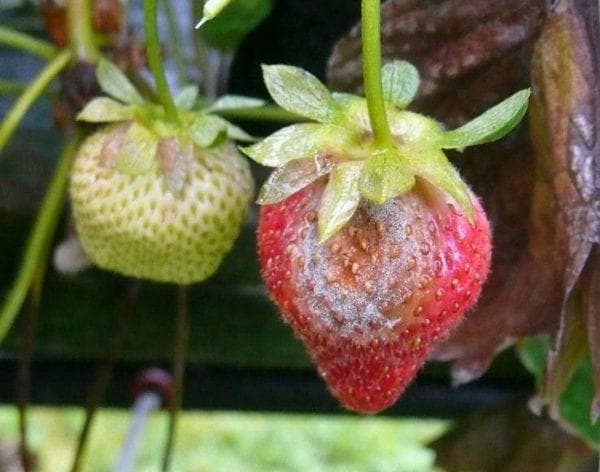

Gray rot of strawberries - Strawberry mite... The strawberry leaves begin to curl. To combat parasites, the bushes are sprayed with acaricide solutions. 600 ml of water accounts for 1 ml of Actellik. Using special chemicals, you can learn how to grow a good harvest of strawberries.
- Stem nematode. Small white spots form on the leaves. To eliminate the disease, you will have to spray the bushes with fungicides - Auparen, Horus.
Planting and leaving
The cultivation technique is not very difficult. Of course, some effort will have to be made, but, compared to other varieties, this is little effort. Due to the fact that the leaves are large and spreading, the distance must be taken into account when planting. You can sit down by means of a stepson and dividing a bush.
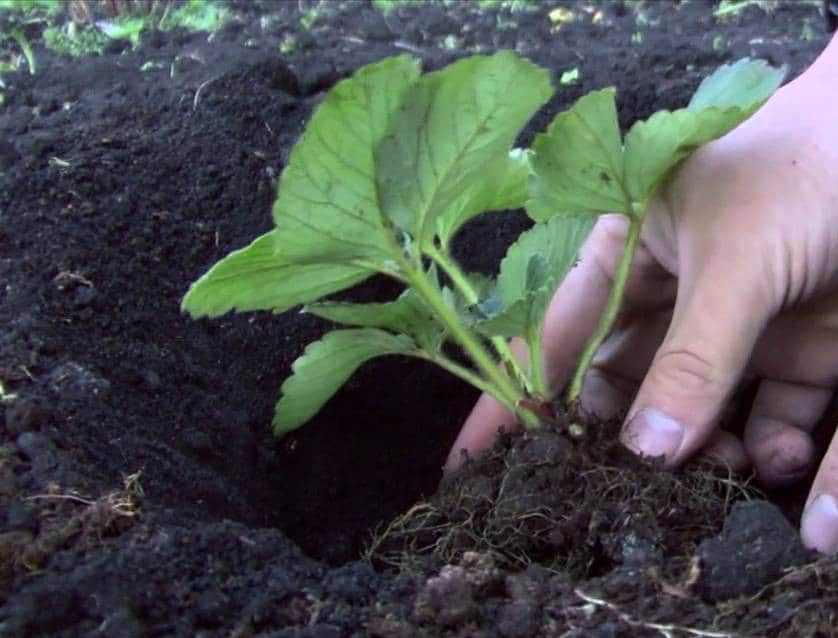

When planting, the holes are made deep so that the roots are straightened.
- Seeds are rarely used, except on large farms and in laboratories. Stepson grows on purpose, since for good yields they are usually cut off - stepchildren. A powerful healthy bush is left for the selection of the mustache.
- It is noteworthy that only first years can be used for growing stepchildren., since in the second year strawberries are able to put on a mustache, but such stepchildren lose their ability to reproduce - they will give barren flowers. If, however, fruits from such a mustache appear, then the qualities belonging to this species are lost.
- But also when planting, you can use division from the bush.... They are seated according to the scheme - forty by sixty centimeters. Make the holes deep, but it is forbidden to bury the core. The roots should be straightened, while firmly pressed to the ground, unevenness, slope should not be allowed.
Watering after planting
At first, water should be watered every morning, if there is no rain.
You can add mulch to trap moisture inside the root. And also mulch prevents weeds, and if the summer is too rainy, it contributes to an even distribution of water. Another advantage of using mulch is that it does not come into contact with the soil to prevent rotting.
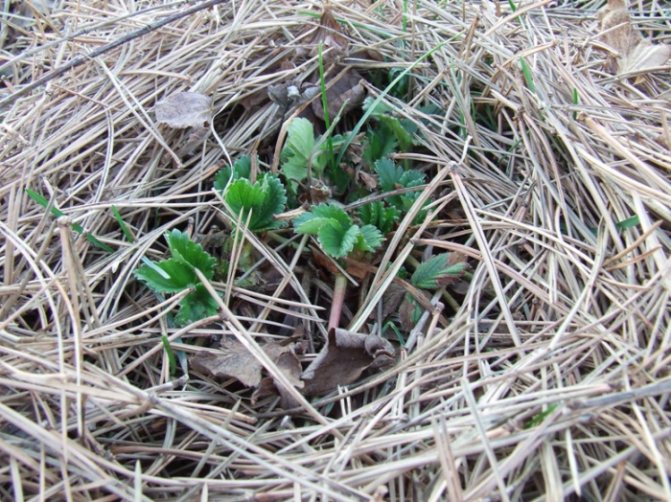

Mulching will help retain moisture.
Reproduction
The Lord's breeding methods are the division of the bush, tendrils and seeds.
Mustache
The antennae of a young strawberry bush is considered suitable for reproduction if the sprout has at least 2 leaves and a root 1.5 cm long. The antennae from the mother bush are planted on a separate bed, abundantly fertilized.
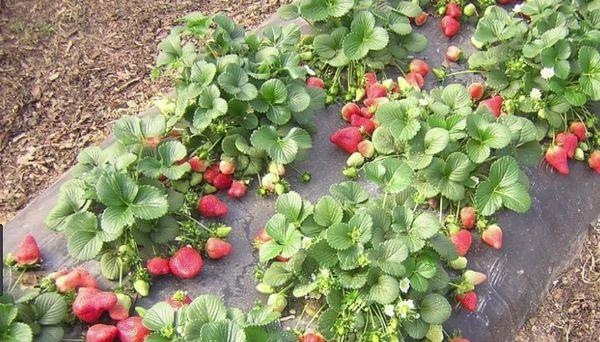

Seeds
Dried seeds are suitable for seedlings. The material is collected by hand from strawberries plucked from our own garden. The resulting sprouts are planted in separate containers, after which they are transferred to a permanent place.
Transplanting bushes
This breeding method is suitable if the strawberry bushes have reached 3 years of age. They have a large and healthy root. The bush itself looks well developed. The division is done in spring or autumn.
The strawberry bushes are dug up, cut in half and planted in the dug holes. This breeding method is the easiest procedure, but it has one significant drawback. The varietal characteristics of strawberries are not always transmitted, therefore it is used very rarely.
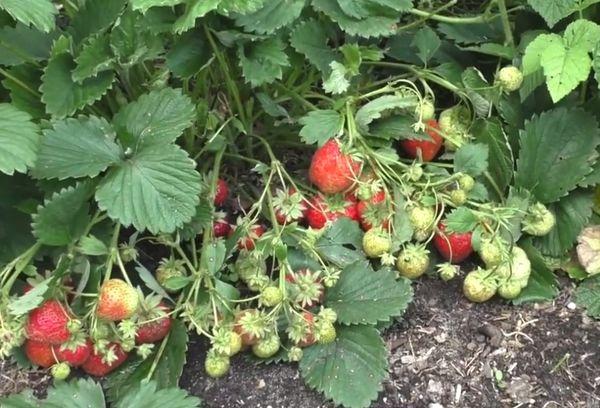

Peduncles and mustaches
- The first peduncles should be cut off.so that the next flowers will lead to the growth of large fruits.
- In addition, if breeding is not planned - pinch, that is, to break off the antennae.
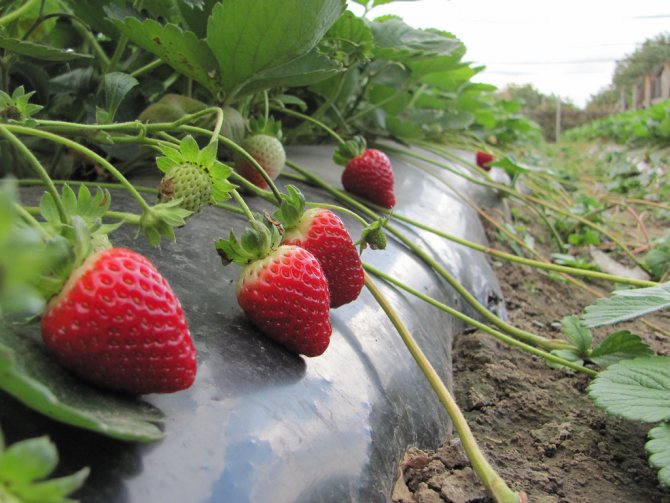

It is necessary to break off the antennae if reproduction is not planned.
This is necessary so that lateral branches do not draw moisture and nutrients from the mother bush - the bush will not be able to give birth to large berries.
Soil selection
Stony soils, lowlands, swampy areas are not suitable for the plant.
The site should be prepared for planting. This requires:
- flat area;
- lack of drafts;
- convenient place for watering;
- weed removal;
- loosening;
- fertilization.
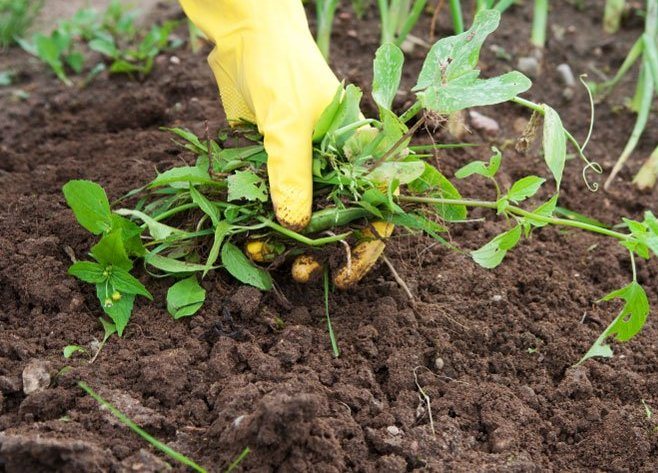

Before planting, the area should be weed-free.
The seedling area should be flat, on the south side or on a small hill so that the plant receives enough light.
It is worth equipping the site so that you can bring the drip irrigation system, eliminate the possibility of drafts... Pre-clean from weeds, residues of other plants, loosen. Then it is watered with ammonia hydrate - ammonia water to avoid the presence of pests. After the soil dries out, you can start planting.
Top dressing
As an organic feed, you can make chicken droppings, manure... This will help increase productivity, significantly affect the quality and size of the berries.
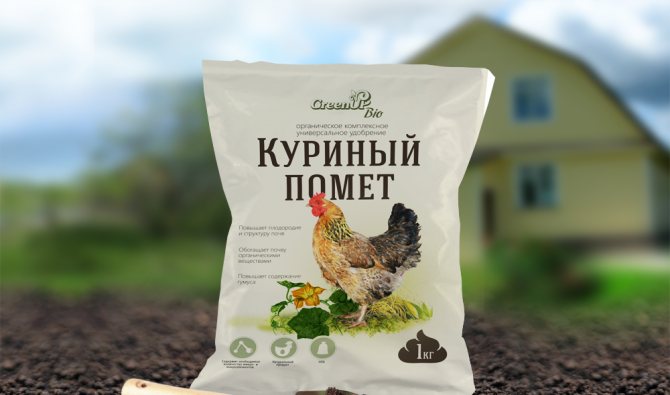

Chicken droppings increase productivity.
Additional feeding
The variety needs feeding four times during the growing season, otherwise large berries and high yields may not be seen.
Top dressing is needed only organic, for example, chicken droppings or manure. This variety uses additional nutrients exclusively for fruit formation, not foliage.
The first feeding is carried out at the beginning of the growing season in April-May. They make a choice:
- Ashes - scatter 0.5 cups around the plant.
- Chicken droppings - infusion 1:20.
- Mullein - infusion 1:20.
The second top dressing falls at the beginning of flowering, it is used for it:
- Mullein - infusion 1:10.
- Green mass - infusion 1:10.
The third feeding is carried out after the end of the fruiting period, for the purpose of fertilization, use:
- Ash - scatter 0.5 cups around each plant.
The fourth feeding is performed at the end of the growing season, September-October. For fertilization, you can use at your choice:
- Mullein - infusion 1:10.
- Wood ash - 1 glass per 10 liters of water.
The variety bears fruit perfectly without much care, but if the elementary rules of agricultural technology are followed, the berries will be much larger and tastier, and the yield will increase significantly.
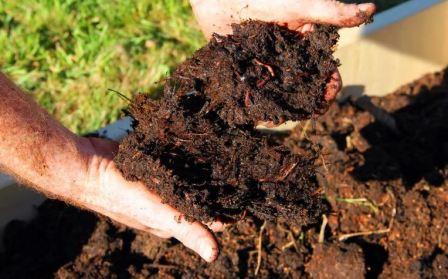

Pest types
Despite the many advantages of the variety, the plant is still susceptible to various pests - gray rot, strawberry mite, stem nematode.
Gray rot is a disease during which a gray coating appears on berries, leaves and stems, similar to small moss or mold.
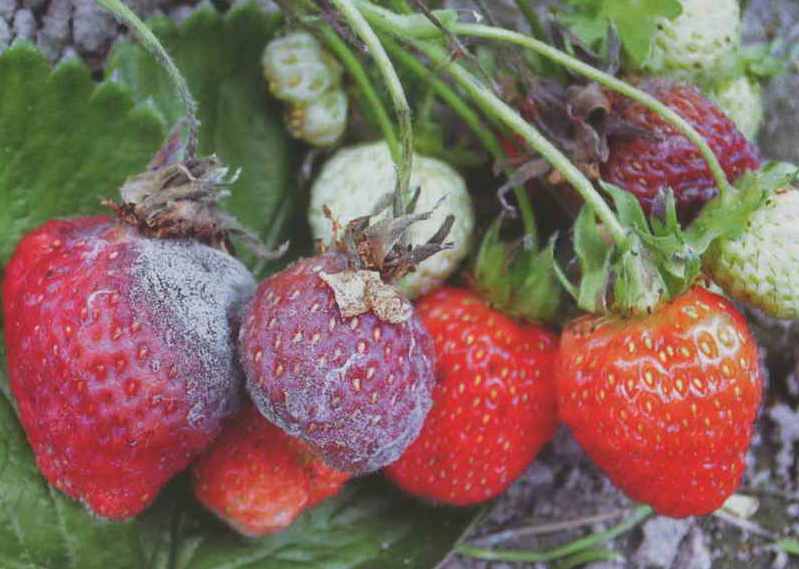

Gray rot on strawberries.
Gray rot occurs, most often at high humidity. You can get rid of it by using an aqueous solution of mustard - spray the bushes and berries. Remove damaged particles and berries so that rot cannot spread.
Strawberry mite
Strawberry mite is a parasite that damages leaves and stems, while larch curls and dries.
You can get rid of with the help of the drug Actellic - dilute with water and spray. There is one milliliter of substance per five hundred grams.
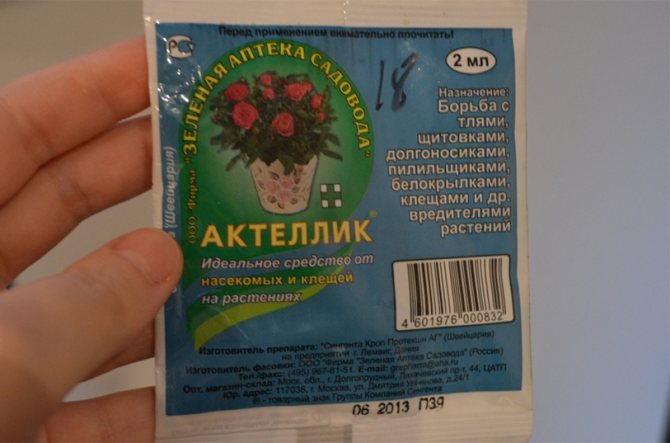

The Actellik remedy will help get rid of the strawberry mite.
Stem nematode
When a stem nematode is affected, white dots appear on the leaves. Eliminated by drugs - Euparen, Horus.
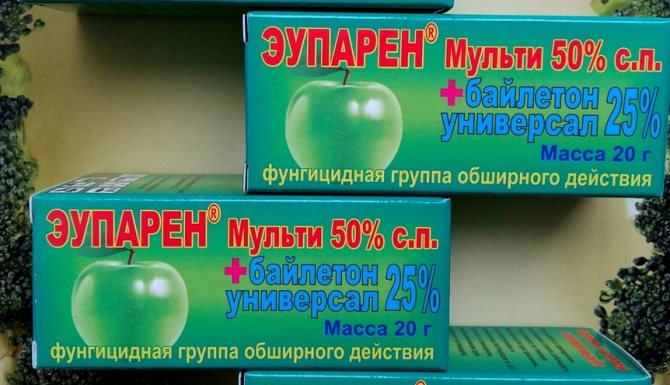

The stem nematode is removed with the help of Euparen.
Main characteristics
Some of the main characteristics are summarized in the table:
| Parameter | Characteristic |
| Culture | Strawberry |
| Ripening period | Mid-season or mid-late |
| Fruiting | One-time (non-repairable), long-term, extended |
| Photoperiodic type | Short daylight hours |
| Yield | High: 151-192 c / ha in the open field, from 500-650 g to 1-1.5 kg per bush |
| Berry mass | Average - 14.5-30 g, maximum - up to 100 g |
| Fruit shape | Rounded obtuse, wide, slightly flattened |
| Berry color | Bright red, with a glossy shine |
| Pulp | Red, juicy, dense |
| Tasting assessment | 4.6-4.9 points (out of 5) |
| Appointment | Universal |
| Associative ability | High (mustache green, long) |
| Sustainability | Winter-hardy variety; drought resistance is weak; slightly susceptible to fungal diseases of leaves and gray rot of fruits, lesions by strawberry mites |
| Productive life cycle | Up to 10 years (depending on climatic conditions and the level of intensity of agricultural technology) |
| Inclusion in the State Register of the Russian Federation | Turned off |
Gardeners reviews
Reviews of gardeners about the culture agree on one thing - strawberries are unpretentious, easy to care for and grow... Differs in large fruits, under favorable conditions - excellent taste and bright aroma. During processing, it does not lose its taste, retains its density as much as possible during cooking and freezing. Suitable for confectionery use, canning.


Lord strawberries are good for making desserts.
Among the minuses, there is an excessive sensitivity to high levels of humidity.
But also a negative feature is the large number of hollow fruits in the harvest. Highlight the fact that when using dressings and preparations against pests, one should take into account the specific feature. This means that not all universal remedies are suitable specifically for the Lord, and you need to look for special funds.
Brief description of the variety
- The variety was developed by UK breeders for cultivation in production conditions.
- The berries are large, round-conical, bright red in color.
- The berry can weigh 85-110 g.
- The berries ripen throughout the end of June - mid-July.
- The bush reaches a height of 58-60 cm and perfectly tolerates spring frosts.
- The planted seedlings quickly take root, grow and form a lot of whiskers.
- When a large crop is ripe, some of the fruits may fall on the ground, which can cause them to rot. In this case, the bushes need to be tied up.
- One bush can produce 1.7-2 kg. bright red berries.
- Ripe berries are quite dense, so they can be stored for a long time and are suitable for transportation.
Advantages and disadvantages, features, differences between the Lord and other varieties
Lord is no longer a young variety, but its popularity does not subside, since it has a lot of advantages, for example:
- extreme large-fruited;
- great taste of berries;
- very high yield;
- elongation of fruiting;
- unpretentious care;
- excellent transportability;
- the ability to bear fruit for a very long time in one place.
The disadvantages are:
- deterioration in the taste of berries in rainy weather;
- insufficient resistance to gray rot and leaf spot;
- the possibility of the formation of internal voids in the berries;
- the requirement of a large space in the garden.
In addition, it is clear that such a high yield requires the introduction of substantial doses of fertilizers both during planting and during subsequent care.
A distinctive feature of the Lord variety is the very large size of the berries while maintaining their excellent taste. The variety has very few analogues. The largest variety is considered to be Chamora Turusi, the disadvantages of which are considered to be low immunity to diseases and intolerance to hot weather. In this regard, Lord is much better, although he is also not very sickly resistant. Other large-fruited varieties (for example, Gigantella or Marshal) are characterized by a slightly less pronounced taste and worse transportability of the crop. In general, Lord strawberry, with all its shortcomings, can be recognized as one of the best modern varieties.
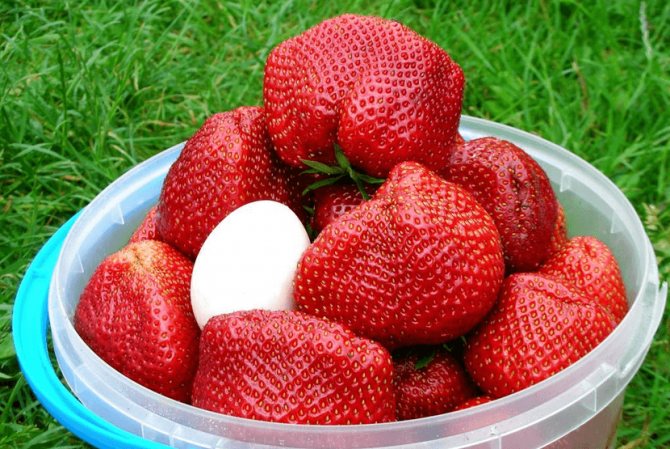

It is difficult for the Lord to compete with Chamora in large-fruited

